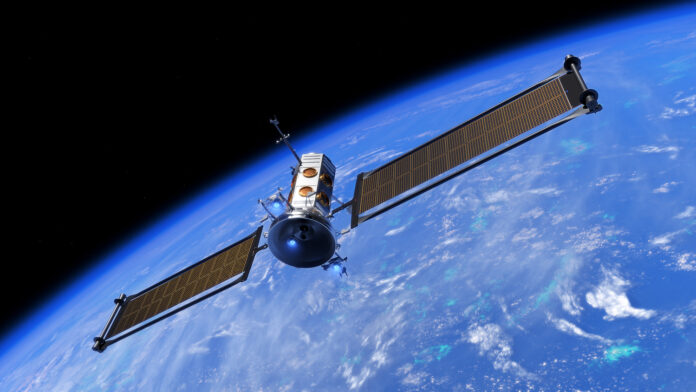Blue Origin is taking a monumental leap forward by deploying an AI-powered space surveillance sensor on the inaugural flight of its Blue Ring spacecraft. This strategic move, developed in collaboration with Scout Space, promises a dramatic enhancement in space domain awareness. Most importantly, the mission not only heralds Blue Origin’s ambitions to revolutionize orbital monitoring but also introduces next-generation autonomous intelligence capabilities for both national security and commercial operations.
Because the project merges cutting-edge artificial intelligence with robust space infrastructure, it is set to transform how space activities are monitored. The mission, scheduled for launch in spring 2026, serves as a cornerstone for a new era in orbital surveillance. Additionally, industry leaders and defense experts are paying close attention as each innovative step paves the way for diversified in-space operations, as mentioned in Blue Origin’s news release.
Why Blue Origin’s Blue Ring Matters
The Blue Ring spacecraft embodies Blue Origin’s bold ambitions within the expanding realm of multi-mission orbital platforms. Its modular design and versatile payload capabilities set the stage for an era of enhanced on-orbit functionality. Besides that, the craft’s ability to carry up to 4,000 kg of payload, coupled with advanced electric and chemical propulsion systems, marks it as a highly flexible resource for both government entities and commercial customers. This adaptability offers new possibilities in satellite servicing, orbital debris removal, and other in-space missions.
Moreover, Blue Ring’s innovative architecture is engineered to support diverse missions including payload delivery, on-orbit hosting, and acting as a space tug. Because it features a payload bay that can accommodate up to 13 ports, it facilitates the integration of multiple sensors and devices concurrently. Therefore, both commercial and defense sectors benefit from the platform’s multi-functional design, a sentiment echoed by various industry reports such as those highlighted by Defense Daily.
The AI-Powered Owl Sensor: A Leap for Space Surveillance
At the heart of this mission lies the revolutionary Owl sensor from Scout Space. This AI-powered optical instrument is built for real-time tracking and characterization of space objects. Most importantly, its design integrates artificial intelligence with edge computing to provide rapid data analysis directly in space. This capability will enable immediate assessments of potential threats, tracking of satellites, and even help in the identification of orbital debris.
Because onboard processing is executed with minimal latency, the sensor can generate actionable intelligence on the fly. This results in superior real-time decision-making capabilities that greatly enhance space situational awareness. Besides that, the sensor’s precision and responsiveness are likely to become benchmarks for future missions, as detailed in notes from recent reports on its development.
Strengthening U.S. Space Domain Awareness
This mission significantly bolsters U.S. space domain awareness, particularly in key orbital regimes such as geostationary Earth orbit (GEO). Advanced systems like the Owl sensor are vital as space becomes increasingly congested with both cooperative and non-cooperative objects. Most importantly, the sensor adds a crucial layer of defensive capability by providing enhanced tracking and rapid decision-making support to the U.S. Space Force and allied defense organizations.
Additionally, integrating autonomous sensors, such as the Owl, within larger space architectures signals a shift towards comprehensive situational awareness networks. Therefore, as orbits become busier and the risk of collisions increases, such sensor technologies become imperative. This advancement is in line with broader industry moves highlighted in articles from Spaceflight Now and other leading news outlets.
How the Blue Ring and Owl Sensor Integration Works
The Blue Ring spacecraft is designed to be a highly integrated platform that easily incorporates next-generation payloads. With both electric and chemical propulsion systems at its disposal, the vehicle can perform precise maneuvering and station-keeping, essential for in-orbit sensor operations. Most importantly, this dual-propulsion capability ensures that the platform maintains optimal positioning for continuous surveillance and data collection.
Because the modular payload bay is capable of supporting up to 13 separate ports, it may host multiple cutting-edge technologies concurrently. For the Owl sensor, this design optimizes its field of view and enhances its data capture potential. In addition, the onboard edge computing minimizes delays, making the entire system more responsive to dynamic space environments. This seamless integration of hardware and software, supported by mission details available from Blue Origin, underpins the platform’s versatility.
The Path Ahead for Multi-Mission Spacecraft
Blue Origin’s Blue Ring spacecraft not only sets a new industry standard but also paves the way for future multi-mission platforms. Most importantly, this mission illustrates that modern spacecraft must transcend simple payload delivery by hosting autonomous sensors, relaying high-volume data, and even executing satellite servicing tasks. Because the operational envelope of these platforms is rapidly expanding, their capabilities will be critical for a wide range of space missions, from GEO operations to interplanetary endeavors.
Therefore, as advancements in onboard processing and propulsion continue to evolve, the future holds exciting possibilities for autonomous space missions. New applications in lunar operations, Mars transfers, and cislunar monitoring are already on the horizon. Most importantly, the Blue Ring mission exemplifies a transition toward platforms that can adapt in real time to emerging challenges in space, making it a game-changer in the industry.
Conclusion: A New Era of Autonomous Orbital Surveillance
The integration of the AI-powered Owl sensor aboard the Blue Ring spacecraft marks a significant milestone in the evolution of space surveillance. Because it merges advanced propulsion, intelligent data processing, and autonomous monitoring into a single platform, this mission sets a new standard for space operations. Most importantly, it demonstrates the power of innovative collaborations to redefine how space domain awareness is achieved, ensuring that both commercial and defense sectors remain well-prepared for the future.
Furthermore, as industry observers and defense officials continue to monitor developments, it becomes clear that these technological breakthroughs are not isolated. They represent the beginning of a broader shift towards enhanced, real-time situational awareness in space. Therefore, with forward-thinking initiatives like this, the future of orbital surveillance promises increased safety, improved operational agility, and unprecedented monitoring capabilities.



